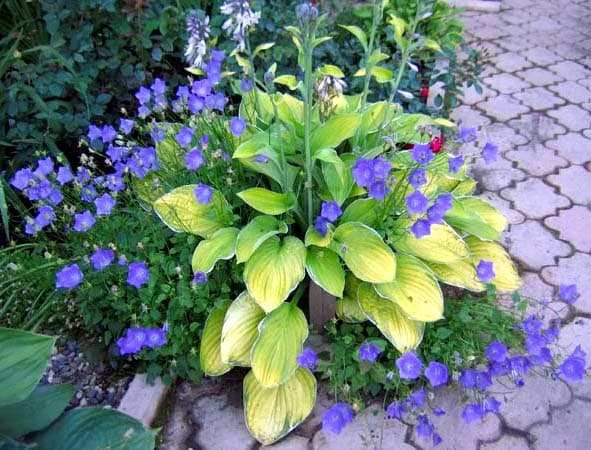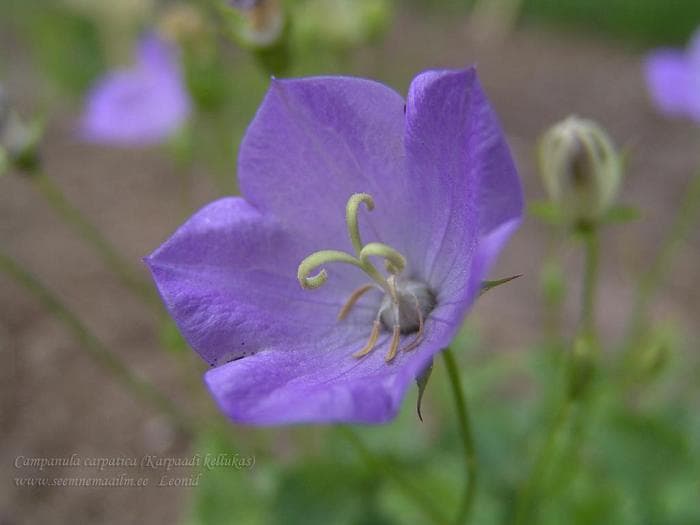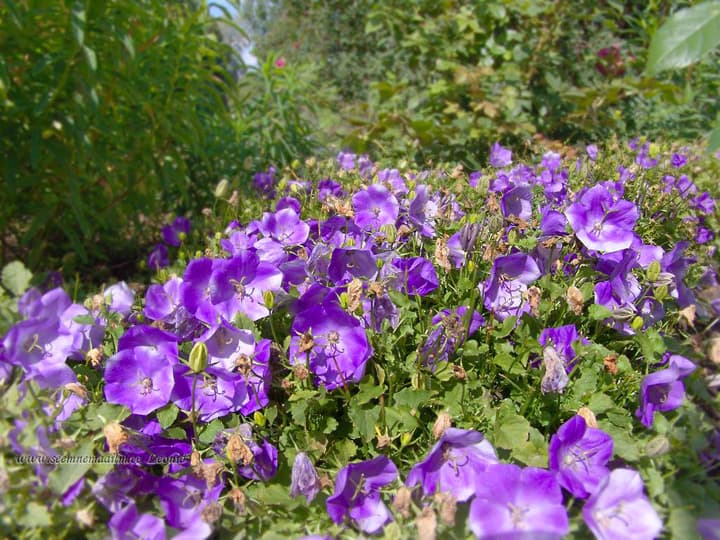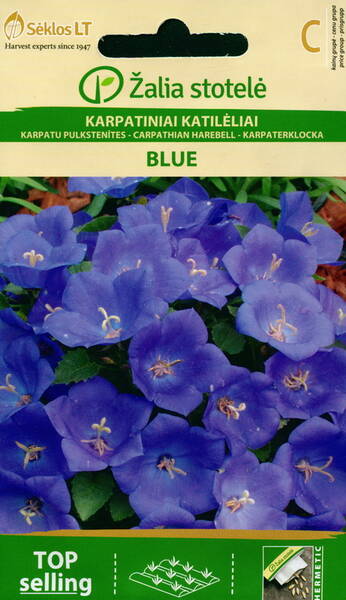One of the most spectacular and unpretentious perennials for borders and rock gardens.
Numerous flowering shoots form compact rounded bushes. Differs in long flowering. Flowers solitary, calyx open up, not drooping. To prolong the flowering period, pruning of shoots with old flowers is desirable. Recommended for planting in borders, prefabricated flower beds and rock gardens, for cutting into miniature bouquets. Placed on light, loose, fertile soils.
Location: sunny or in partial shade.
Growing: through seedlings.
Sowing seeds: April-May (1). Sowing is superficial, under glass. Shoots appear in 14-20 days. Winters without shelter.
Transfer: August.
Flowering: June-September (second year).
1,0 g = 4500 seeds.

Agricultural technology.
Bellflowers are undemanding to soils, but they develop better on well-cultivated, drained, neutral or slightly alkaline soils with sufficient nutrition. It is desirable that the site be well-drained with diversion ditches or drainage pipes since bluebells do not tolerate stagnant water during wintering, their roots rot and freeze. You can not plant them in areas flooded with rain or spring waters.
The soil for planting plants is prepared in advance, digging up 30-40 cm and carefully removing weeds. Sand and peat are added to heavy clay and loamy soils. These soils contain enough nutrients, so fertilizers should be applied in small quantities. Soddy soil, peat, humus or silty pond soil should be added to loose, but poor in humus, sandy soils. Fresh peat and manure should not be introduced, as this can cause an outbreak of fungal diseases.
With regard to soil acidity, most species grow well in neutral and slightly alkaline, and species such as bearded and carved bells grow in slightly acidic soil. Mountain species growing in nature on limestone rocks need slightly alkaline soils, so it is better to lime the ground before planting them (three-toothed bells, Osh, Kemularia, etc.).

Care: in the spring, before the start of spring regrowth, the plants need to be fed with nitrogen fertilizer, it’s a good idea to sprinkle well-rotted manure and ash under the bushes (at the rate of 400 g per 10 m2). Before budding, top dressing with mineral mixtures of NPK of low concentration (10-15 g / m2) is useful.
In the first half of summer (before flowering), regular weeding and loosening of the soil are necessary. Most bluebells in the middle lane can do without watering; during dry periods they are watered sparingly. The exceptions are forest and coastal species (bells broad-leaved, dotted, Takeshima).
All bluebells do not tolerate stagnant water.
If you carefully remove wilted flowers and dried flower stalks, you can extend the flowering period of bluebells.
Flowering shoots left to collect seeds are cut off when the bolls turn brown, but before the pores open (otherwise the seeds will spill out onto the ground). In late September - early October, all stems are cut at the root. Transplanted bells in spring and autumn. In early spring (after the snow melts), you can transplant bluebells with a powerful root system (bells broad-leaved, crowded, etc.).
Bluebells with a less developed root system are best transplanted in May, when the soil warms up. In autumn, it is better to do this in late August - early September, so that the plants have time to take root before the onset of frost.
Some species with compact, shallow root systems can be transplanted throughout the growing season, even during flowering. Plants should be transplanted with a large clod of earth in order to injure the roots as little as possible, and it is good to shed a pre-prepared hole before and after planting (carpathian bells, round-leaved, polymorphic, spoon-leaved, gargan, medium, etc.).
Light shelter with spruce branches or a dry leaf is required only by southern species (gargan bells, pyramidal, middle, etc.). You can sprinkle tall plants with dry peat or humus with a layer of 15-20 cm, but no more.
Diseases and Pests: Bluebells are rarely damaged by diseases and pests. However, with long-term cultivation in one place, pathogenic microorganisms can accumulate in the soil, causing the death of plants. The most harmful of the fungi are Fusarium, Sclerotinia, Botrytis.

Bellflower carpatica, Tussock bellflower.












